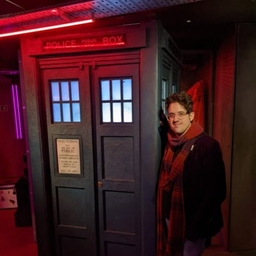
Ian Randall
Deputy Science Editor at Newsweek
Deputy Science Editor at Newsweek. Woeful caffeine addict. Purveyor of useless information. All opinions are my own.
Articles
-
1 week ago |
newsweekespanol.com | Ian Randall
Una vacuna superpotente contra el VIH podría ofrecer una fuerte protección con una sola inyección, según indica un estudio reciente del Instituto Tecnológico de Massachusetts (MIT) realizado en ratones. Desarrollada por el MIT y el Centro de Investigación Scripps, la vacuna incluye dos “adyuvantes”, materiales que ayudan a estimular la respuesta del sistema inmunológico.
-
1 week ago |
newsweek.com | Ian Randall
A supercharged HIV vaccine could offer strong protection with just one injection, a study in mice has indicated. Developed by researchers from the Massachusetts Institute of Technology (MIT) and the Scripps Research Center, the vaccine includes two "adjuvants"—materials that help stimulate the immune system response. In the experiments, the dual-adjuvant vaccine was found to produce a wider diversity of antibodies to protect against an HIV protein than with either single adjuvant or none at all.
-
1 week ago |
newsweek.pl | Ian Randall
— Mierząc ponad 140 tys. różnych wersji białek, stworzyliśmy pierwszą kompleksową mapę tego, jak poszczególne mutacje zmieniają krajobraz energetyczny agregacji amyloidu beta — procesu kluczowego dla rozwoju choroby Alzheimera — tłumaczyła w oświadczeniu autorka artykułu i biolog obliczeniowy Anna Arutyunyan z Wellcome Sanger Institute.
-
1 week ago |
onet.pl | Ian Randall
To badanie może zrewolucjonizować leczenie Alzheimera— Mierząc ponad 140 tys. różnych wersji białek, stworzyliśmy pierwszą kompleksową mapę tego, jak poszczególne mutacje zmieniają krajobraz energetyczny agregacji amyloidu beta — procesu kluczowego dla rozwoju choroby Alzheimera — tłumaczyła w oświadczeniu autorka artykułu i biolog obliczeniowy Anna Arutyunyan z Wellcome Sanger Institute.
-
1 week ago |
newsweek.com | Ian Randall
Mysterious radio signals detected emanating from Antarctica's ice have left particle physicists baffled. The pulses were detected by the Antarctic Impulsive Transient Antenna (ANITA)—an array of radio instruments flown high above the southernmost continent via air balloon. ANTIA was designed to detect the radio waves generated when neutrinos from space hit the Antarctic ice, with the aim of learning more about distant cosmic phenomena.
Try JournoFinder For Free
Search and contact over 1M+ journalist profiles, browse 100M+ articles, and unlock powerful PR tools.
Start Your 7-Day Free Trial →Coverage map
X (formerly Twitter)
- Followers
- 362
- Tweets
- 135
- DMs Open
- No

RT @Maze_Theory: Enter the impossible in Infinite Inside, coming to Mixed Reality on July 12th. Explore a serene world, solve intricate pu…

RT @InfiniteInside_: Uncover the truth in Infinite Inside. When the enigmatic ancient artifact known as the 'Plinth' mysteriously material…

@leilageologist Cool.